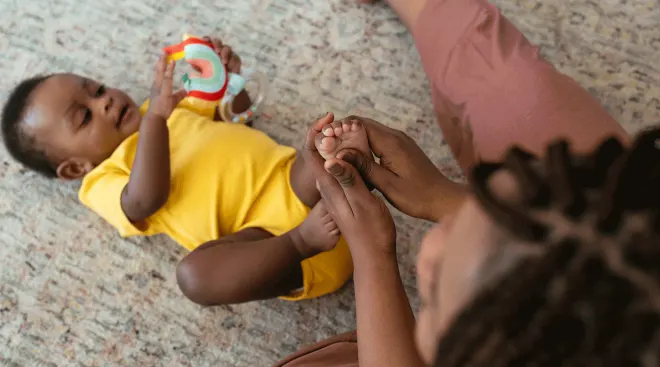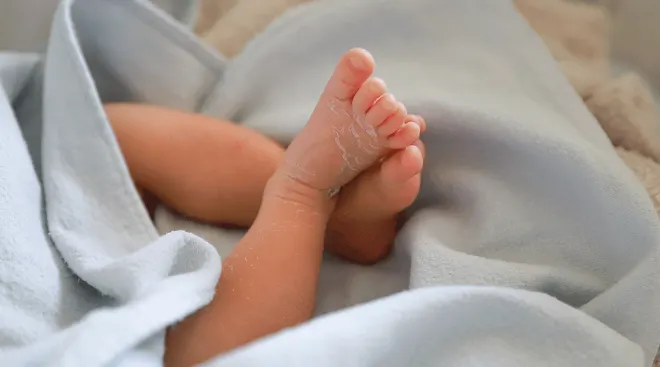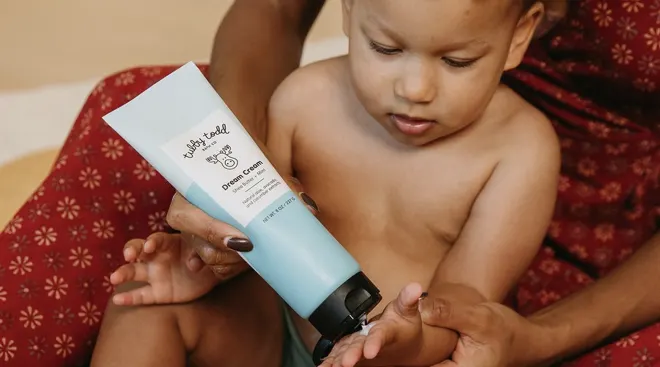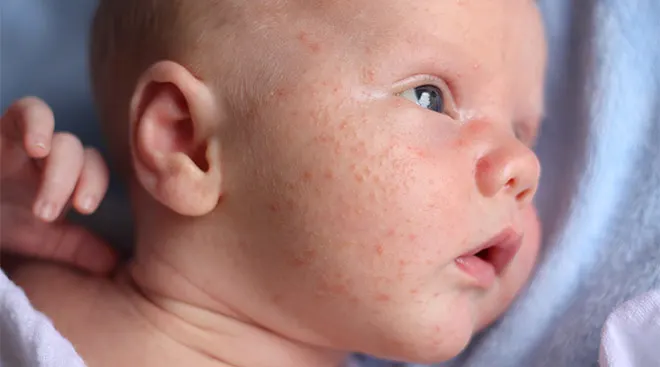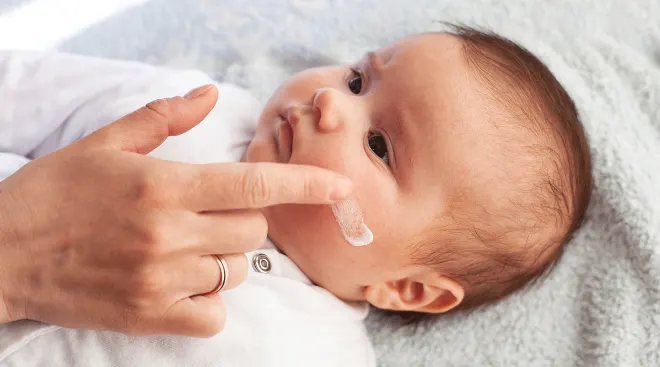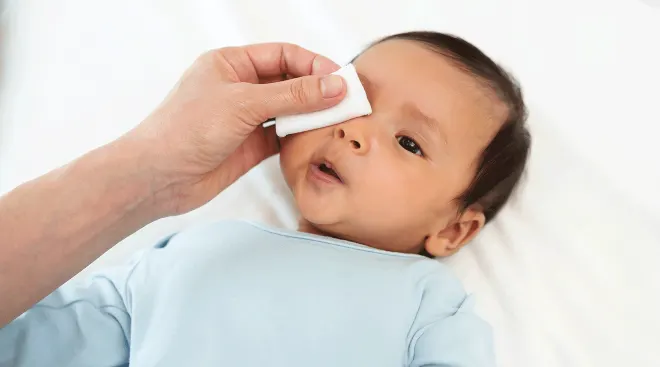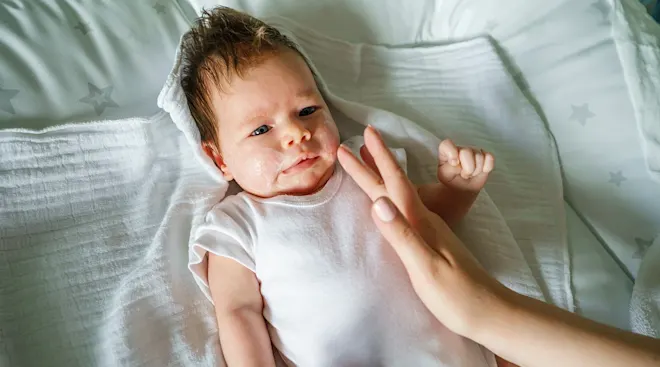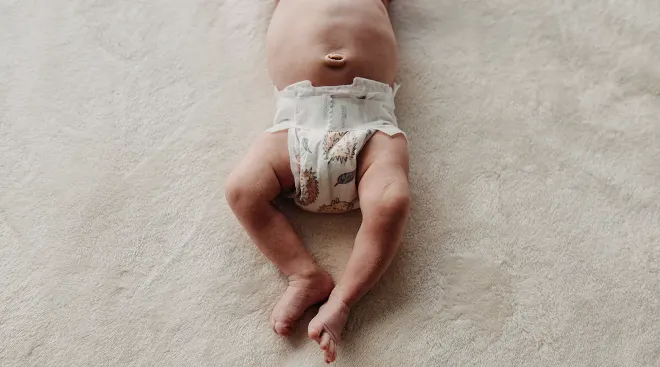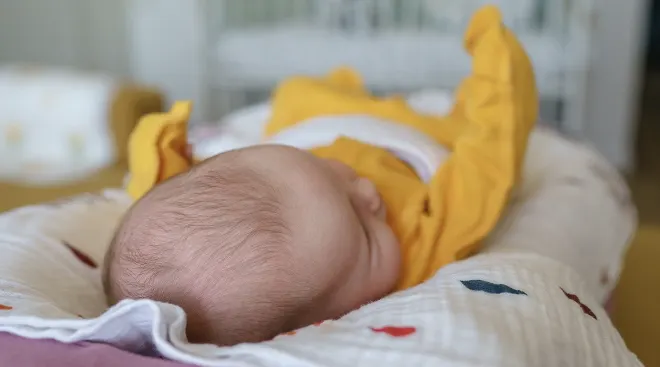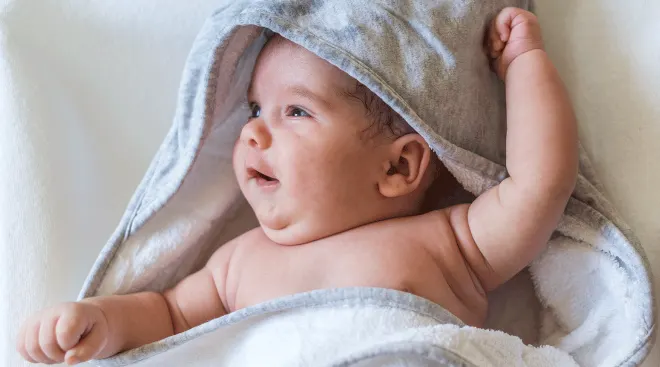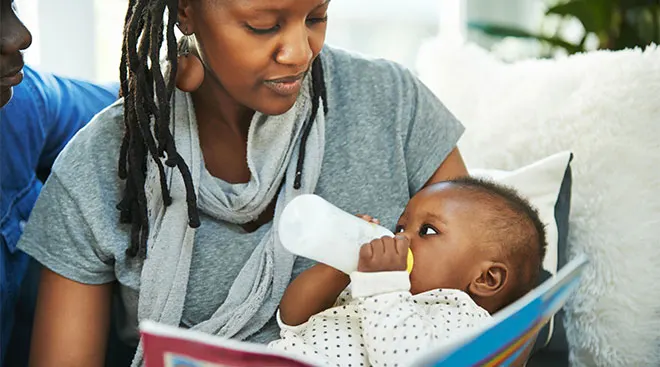Everything to Know About Caring for Baby's Umbilical Cord
Once baby emerges from mom’s womb and into the world, there’s no need for the umbilical cord anymore—but it takes a little bit of time before baby’s body sheds the umbilical cord stump and fully heals. So when does the umbilical cord fall off, and how should you go about cleaning and caring for the umbilical cord stump in the meantime? Read on to learn everything you need to know about baby umbilical cord care.
The umbilical cord is baby’s lifeline while in utero: It connects them to the placenta, transferring nutrients and oxygen from your body to theirs and removing waste from their body to yours. When baby is born the umbilical cord will be cut, since they no longer need that connection to you—though the stump of the umbilical cord will stay with them until a few weeks after birth.
After baby’s born, your body will expel the umbilical cord along with the placenta, and your doctor or midwife will cut the connection close to baby’s belly button. That umbilical cord stump will cover baby’s navel until it heals and then falls off on its own. But until it does, it’s important to know the general guidelines when it comes to umbilical cord care.
Umbilical cord care protocols have changed quite a lot since you were a baby—so your mom’s advice may not be the best way to go. “There was a time when parents were being told to apply alcohol to the stump to help it dry out and fall off faster,” says Carrie Brown, MD, a pediatrician at Arkansas Children’s Hospital in Little Rock, Arkansas. “But research has since shown that using alcohol is not necessarily helpful.” Studies prove that alcohol doesn’t speed up the healing process. What’s more, it may also kill the good bacteria that can help the umbilical cord fall off on its own, notes the Mayo Clinic.
Instead, the most effective, science-backed approach to caring for the umbilical cord is simply to not mess with it. “Generally, it’s best to leave the umbilical cord open to the air as much as possible,” says Karen Fratantoni, MD, medical director of the Complex Care Program at Children’s National Health System in Washington, DC. “The umbilical cord will heal faster if it’s kept dry.” To help promote healing, keep these top umbilical cord care tips in mind:
• Give baby sponge baths. Sponge baths are a good option since you don’t want to submerge baby in the bathtub until the umbilical cord stump has fallen off. Just use water or water and a mild soap.
• Air it out. Try not to cover the stump with baby’s diaper (plenty of newborn diapers come with a U-notch to ensure baby’s umbilical cord isn’t covered up). Use comfortably fitting—not tight—onesies, or just dress baby in diapers and T-shirts. Don’t clean the stump unless it comes in contact with stool or other potential infectants. In that case, clean it with water and a mild soap, and dry it thoroughly.
• Leave it alone. Umbilical cord falling off? Avoid the urge to pull at it. It’ll fall off naturally once it’s ready. In the meantime, leave it alone.
Many parents know you shouldn’t fuss with baby’s umbilical cord stump, but are still eager to know when it’ll fall off on its own. The good news is you won’t have to wait long: The umbilical cord typically falls off 10 to 14 days after baby’s birth. Don’t worry if the umbilical cord falling off doesn’t happen in that exact time frame though; the American Academy of Pediatrics says this can take up to three weeks. If it’s still hanging tight past this point, check in with your pediatrician. It’s most likely fine, but it could be a sign of infection or an immune system disorder.
If you’re wondering what to do when the umbilical cord stump falls off, the answer is: Don’t panic. It’s totally normal and not cause for alarm. "There may be a small amount of blood when the stump falls off, but this is normal and shouldn’t last for more than a minute or two,” Brown says. A small scab will form where the umbilical cord was attached. Keep the area clean with a wet cotton swab, then dry thoroughly.
A little bit of bleeding from the umbilical cord or the area around it when the stump falls off, or is in the process of falling off, isn’t cause for concern. However, significant or continued bleeding at the newborn umbilical cord site could be a symptom of infection. Additionally, the following signs point to a potential newborn umbilical cord infection:
- Red, tender or swollen skin around the umbilical cord
- Significant bleeding
- White or yellow pus draining from the umbilical cord site consistently
- Fever over 100.4 degrees Fahrenheit rectally
If the area seems irritated, call your pediatrician right away. It could be Omphalitis, a serious bacterial infection of the baby umbilical stump that spreads to the surrounding skin. While this condition requires immediate medical attention, the reassuring news is that it’s relatively rare, affecting approximately 1 in 200 newborns.
Also rare, an umbilical granuloma is a minor baby umbilical cord complication that’s characterized by redness and oozing yellow fluid. According to the American Academy of Pediatrics, a granuloma is a mass of scar tissue that grows in the center of the navel after the newborn umbilical cord stump falls off. This condition may go away on its own after a few days, but it sometimes requires treatment. Speak to your pediatrician if you notice this—they’ll likely want you to bring baby in for a visit and may need to cauterize the area. This is a simple procedure done in the office to help the area heal better.
In most cases, the baby umbilical cord will fall off as expected and the area will heal with minimal care. If the idea of the umbilical cord falling off has you nervous, rest assured that it’s typically pretty uneventful. You may find the stump in baby’s onesie or it may just fall off during a routine diaper change. Either way, it’s another big newborn milestone to celebrate. Of course, don’t hesitate to reach out to your doctor with any concerns.
Please note: The Bump and the materials and information it contains are not intended to, and do not constitute, medical or other health advice or diagnosis and should not be used as such. You should always consult with a qualified physician or health professional about your specific circumstances.
Plus, more from The Bump Circumcision Care 101
Carrie Brown, MD, is a pediatrician at Arkansas Children’s Hospital in Little Rock, Arkansas. She earned her medical degree from Ross University School of Medicine in Barbados.
Karen Fratantoni, MD, MPH, serves as medical director of the Complex Care Program at Children’s National Health System in Washington, DC. She earned her medical degree at Eastern Virginia Medical School in Norfolk.
Medicine, 70% Alcohol Versus Dry Cord Care in the Umbilical Cord Care, April 2016
Mayo Clinic, Umbilical cord care: Do's and don'ts for parents, February 2024
American Academy of PediatricsUmbilical Cord Care, December 2020
Learn how we ensure the accuracy of our content through our editorial and medical review process.
Navigate forward to interact with the calendar and select a date. Press the question mark key to get the keyboard shortcuts for changing dates.
Advertisement
Advertisement
Advertisement
Advertisement









































